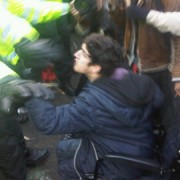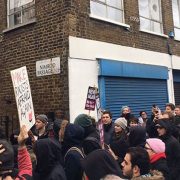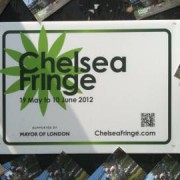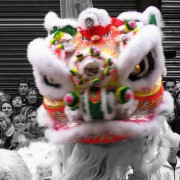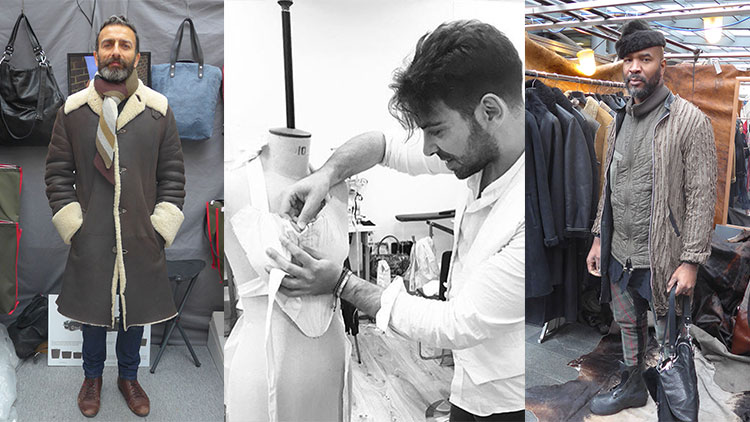
Designers Kenny, Eddie and Kervin. Pics. Saman Javed, Eddie Gavrwilidis and Sophie Soar
From medieval cloth dying to garment production in the nineteenth century, east London has held a strong relationship with fashion for hundreds of years.
While the industrial community may have dispersed in recent years, east London’s fashion legacy still remains.
In light of this, we caught up with local designers and manufacturers to tell us about their businesses and what local fashion means to them.
Pic. Instagram/rarethread Name: Laura Miles Age: 44 Occupation: Woven textile designer along with business partner Kirsty McDougall. Company: Rare Thread What does local fashion mean to you? Most of the fashion is in east London and most new and upcoming designers are there. You just feel this kind of energy that’s quite inspirational. What does working in London mean for your work? For me, it’s just such an inspiring place. We’re based in Islington now but we were in Dalston. I’ve always worked around Hackney. There’s an ease to it because it’s where the designers are, on a practical basis. It’s very easy, people are always popping in with this exchange of ideas. It’s where you feel stuff is happening. Neither of us are gonna ever live in the countryside. We’re really inspired by London and being here. Where do you source your yarns and materials from? We source from all over. A lot of yarn companies are Italian. We use a lot of materials that are not necessarily yarn. We shred up fabric. It kind of is recycling but it’s more for the look. We weave with chiffon, feathers... the Matty Bovan [fabrics] were Wool and the Gang, which is a knitting yarn. But we like to use odd materials. Not things that you would automatically think of as things that could be woven. We use a lot of wool from the UK. For us, it’s more about is it interesting? Is recycled yarn your more popular thread? We want it to be - it’s the early stages of it. We hate the waste that comes with fashion and to us, it’s a way that we can do our bit to stop it. What’s nice about it is that it actually looks nice. That’s been the problem with it before, it doesn’t come in nice colours. Natural dyes are - not everyone wants a beige fabric. We want to do more with [reducing pollution] and we think the recycled yarn is the way to do it. You can get some from the UK but we’re not really focusing solely on UK spinners because it’s quite limiting. For us, it’s more about is the price good? Is it sustainable? Is there a community among local manufacturers and designers? There is. A lot of stuff we get is word of mouth or we work with someone and then they recommend their friend. How many people do you employ? Are they local? At the moment, it’s just the two of us and we have an army of interns who are woven textile students. Do you export your fabrics? If so, where? Yes, America is a big market for us. We work with Paris. What kind of clients do you normally work with? It depends. When we sell designs, anyone from Gap to Calvin Klein to Valentino. What I think people like about us is that we don’t have a commercial collection and a couture collection. We try to make everything inspiring. Everyone buys from the same collection, for inspiration. We work with everyone really. Do you support local fashion as an individual? Yes, we do. Do you shop locally? Yes. Kervin Marc. Pic: Sophie Soar Name: Kervin Marc Age: 43 Occupation: Designer/Artist Company: Kervin Marc Limited What does local fashion mean to you? Local fashion means everything I don’t want to be. We’re in a global stage. What does working in London mean for your work? We’re on a global stage so London is global. Do you support local fashion as an individual? Don’t like the idea. I’m from the Caribbean. I was born in St Lucia. I’ve been in this country now 33 years. I went to Central St Martins Art College. I had my agent in Milan. I go to Paris for Fashion Week. I go to New York and sell. You know, I’ve got big influences from Jamaican dancehall music, reggae music. Love Oriental art. Love the Scandinavians, their approach to design. Well, not all of them but you know, love that sort of Antwerp group, you know Margiela and so and so forth. So hopefully with this answer, you can understand why I don’t like this local idea. Where do you source your materials from? I use a lot of leather, sheepskin. It’s mainly Italian actually. Do you feel support as a local company? Do you know what, the arts, talent and entrepreneurial skills, is what it is. I don’t need to get anybody to support me, I’m not a charity. I have to survive. Do people in India go to the people who are on the street and so and say, “I’m gonna help you." Life is tough. I’m not looking out for anyone to support me. Is there a community among local designers? Um, I think this whole idea of community is gone. I mean, we’re under a conservative government, we’re not under a socialist type government and yeah, this community thing is not as relevant as it was. Obviously, we’re in Shoreditch and it did have a sort of a strong creative community but creativity tends to move on because everything is now a lot more expensive and so on and so forth. So that community, which was once here, is not as here as it was before. To contradict myself, perhaps I possibly feel a community of a few of the market traders who are here. I think you interviewed one, Johann, and there's a handful of people who have the attributes of previous designer-makers who were here, 15, 20 years ago. So I’m of that school, designer-maker of the original type who were here back in the day but there aren’t many left now. How many people do you employ? Are they local? Well I have my machiners and so and so, I suppose maybe about five, but some of it is part employment. They are in Stratford. Where do you sell your clothes? At Spitalfields Market, where you’re standing, on my stall. I go to Paris. I don’t have an agent in Milan anymore so I’m not there. I go to New York and do some shows out there. I’ve sold in Japan. I used to live in Australia so I used to sell in Australia as well. That’s why I’m talking about this global thing. But it’s a very small nucleus. I’m here on my stall, it’s a small space, but 90 per cent of my customers are international. Sebastian Stobbs. Pic: Sophie Soar Name: Sebastian Stobbs Age: 34 Occupation: Self-employed business owner Company: Conquer Gear What does local fashion mean to you? I prefer the word clothing because fashion is loaded with lots of context about value, which is implied, not real. But I personally come from an art background where I was fed up with a lot of status attached to items because everything has a value that you can perceive but also as little value or as much value as you give it. So fashion is something that I think people call clothing to make it sound more important because everyone in the world wears clothing, only some people wear something that they consider to be more important than other pieces of clothing. I think it’s a place where people love to express themselves and I think that’s great and I’m not anti-expression with clothing. What does working in London mean for your work? It’s a market that is worldwide, which is kind of very important for us because I think that we are semi-niche for the type of imagery that we use. So a lot of people from a lot of different countries that are also trying to express something slightly different through imagery can come to a place and find it in east London. Do you support local fashion as an individual? Yes. I wouldn’t say it’s all local because unfortunately, not everything is able to be provided locally, but I definitely do a lot of supporting for micro businesses because I think they give back to their communities. Do you shop locally? Yeah, I visit a lot of local businesses but I’m all for going to Vilnius and supporting local businesses there. I wouldn’t just specifically go out of my way to shop in east London. When I go to Newcastle, I will seek out an independent pub. Where do you source your materials from? Suppliers that provide for a business like me, it is an ethical option. But then also big suppliers, like clothing suppliers, that are going to be able to provide a consistent and good enough quality item for me to be happy and able to give the customer. Predictability, quality, all those thing. But also that the customers know that it is not going to come from child labour cotton fields or unethical working practices that look at 50 hour working weeks just so that they can meet unrealistic deadlines of production. Do you feel support as a local company? Yeah, massively. I mean, we are kind of completely connected with the people. Rather than a company which is providing something and then selling it through third parties, having this relationship through Spitalfields Market is great for us to help grow and build a better product. We get complete, straight reactions from people to tell us why they like and why they don’t like things. Is there a community among local traders and designers? In terms of traders, yeah, we wouldn’t be able to survive without the friends around us. Local traders support us through the bad weather, the accidents that kind of happen, forgetting something at home and then you’re able to draw on the local community to support that. Even things like local cafés because we are so regular, and we’ve been here, I’ve been here 11 years, the relationships we have on a friendship level to support us emotionally as well is really important. How many people do you employ? Are they local? It’s all kind of part-time because we are so tiny. So, we have two sales employees, one of them is also doing part-time behind-the-scenes with admin and general product development. My mum’s the bookkeeper. People come on board when there are specific projects, so we have a little community of people who aren’t necessarily involved in the day to day basis stuff but are very much involved in the business in the long run. Kenny Sanghera. Pic: Saman Javed Name: Kenny Sanghera Age: 46 Occupation: Designer/Maker What does local fashion mean to you? Local fashion, I guess, would be commercial trends in the local area. Maybe a style in the east part of London, which may not necessarily be the same style as west London. There’s a different culture, a different vibe and that’s just in this city. What does working in London mean for your work? For me, it’s imperative that I work in London. London is a real hub for fashion, it's just so diverse, has a mixture of so many different influences, cultures, foods and style. Everything is an influence here. And because you have so many cultures, it brings in such a diversity for your inspiration for when you’re designing, making, creating. So, this city has around nine million people. Other cities don’t have that same creative diversity that we have here. It’s a must to work here. For this industry, for fashion, London is the place. Also because, anyone who flies into this country from around the world, they fly into London and see what London is about. London is really marketed and sold. It’s a great city, but unfortunately, London is not England. I’m from Yorkshire originally, from Leeds. We used to have completely different fashion growing up then what was happening in London. And it was nice because you could go to other cities and see very different fashion and different styles. As an individual, do you support local fashion? Yeah, I think it’s imperative. Local fashion is independent fashion. I wouldn’t even call it fashion, I would call it style. Fashion comes from style really more than anything else. So do I support local fashion, local style? Hell yeah, I think it’s the best thing. I think everyone needs to express themselves. What you’re wearing, yes, you need to look smart or keep warm but it’s an expression of how you feel. Your fingerprint is different, your eyes and nose. Everything that makes you who you are is different, so why wouldn’t you want your clothes to express yourself too? It’s your flavour. Where do you source your materials from? Now that’s really a trade secret. We are constantly looking for new materials and new styles. We make our canvas bags from the roof material of the old Land Rover Defenders. That’s a heritage fabric, that’s to reinforce and bring back British heritage. Everything is handmade so it's bringing back that craftsmanship. It needs to be made in England, right here in the East End and it needs to be handcrafted. How many people do you employ? Are they local? A team of three. There’s the business side of things, there’s the development, there’s the designing, the selling and the marketing. there’s PR. There’s so many things to do. Do you feel supported as a local company? Yes. Everything I design and create is for the local community around here. It's for people who live in a big city like this, they come in regularly. I’ve been here 10 years and I have customers who fly in from across the world who come to see what new bags and styles I’ve got. Is there a community among local designers? Yes, the suppliers and manufacturers are all local. Pic. Eddie Gavriilidis Name: Eddie Gavriilidis Age: 28 Occupation: Fashion designer/business owner Company: The Sampling Studio What does local fashion mean to you? There’s Shoreditch, Bow, Brick Lane and Hackney. They bring different vibes, colours, personalities, cultures. This creates a very interesting marriage between fashion, culture and personal expression. So, I think that’s what makes east London unique. It’s a creative hub. You have artists, fashion designers, and then the industrial side. You have the artistic crowd in combination with the financial crowd. That’s very interesting. What does working in London mean for your work? London, in general, is a city that can offer you a lot of opportunities. In London specifically, we have a long history in garment making, fashion making, ready-to-wear clothes, dating back to the Victorian time and the silk trade, especially in east London. It was like a silk manufacturing hub. They were manufacturing silks all over London. It’s important for me to be here, as a person and as a business. First of all, because most of the fashion industry is in London. All of the big brands are in London. All of the emerging designers are in London. All of the finest fashion colleges and universities in the world are in London. Secondly, it’s so interesting to see the different creations around me, the ideas you get, and all of the amazing people you get to work with through what I do. Do you shop locally? I definitely shop locally. There are fabric stories in Brick Lane, haberdashery stores and fabric markets in Dalston, in Kingsland Road. So yes, it’s something I definitely do as a business. I also help emerging designers turn their ideas into clothes. I help them in every way that I can. I also offer them discounts to help them grow. We try to help in every way. The most important thing is to have creativity, growth and development. Where do you source your materials from? Locally, from east London. It can also be Shepherd's Bush. Usually, I prefer to work with English suppliers, English shops. The only thing that we outsource, but it’s partly of our own business as well, is stunning embellishments and embroideries from India. It's huge out there, we work with the same companies that do work for Balmain, Elie Saab, so it’s really grand and it’s amazing. It’s the only place you can have this impeccable quality and variety of materials. But everything else is from England. As a local company do you feel supported? In general, I don’t think that the fashion industry, whether you’re a designer or a manufacturer, is supported as much as it should be. It’s a necessity for the government or the local authority or the boroughs to support art and fashion too. Not only fashion but smaller businesses in general. So no, I don’t think I feel supported. I think it’s more about the support that I offer than the support I receive. Is there a community among you and other local businesses? I don’t know if there’s a community because at the end of the day a business is a business. Who are your clients? I have many different clients. Everyone that has a connection with fashion design is my client pretty much. We have individuals, first of all, I have my private clients. I design bespoke orders for certain people. That’s one side of what I do. We also have brides and people who want something tailor-made and unique. And then I have students, they come to us to create their collections, to put things together. We work with the biggest universities in London like Central Saint Martins, London College of Fashion and Istituto Marangoni. We also have emerging designers. Then we have the big brands, like Julien Macdonald or Timberland or high-end high street brands who we develop patterns for. We also have local clients like House of Hackney and other independent brands who are making it big now. Johann Brun. Pic: Sophie Soar Name: Johann Brun Age: "I'd prefer not to say." Occupation: Designer Company: Johann Brun What does local fashion mean to you? Visually, that’s a very interesting question. In fact, as soon as you mentioned it, I couldn’t really think what it meant. Well, I will say though that there is creativity between Shoreditch and Bow that does not exist in other parts of London and has apparently moved to other areas because all the newer talent seems to be more around here as opposed to west London. I don’t really know what it means now because it’s so diverse when you come to Spitalfields, it’s quite difficult to pick out one thing. But there’s definitely a dialogue between a lot of creative people here. What does working in London mean for your work? It’s actually really good to work in London because you have this exposure of tourists and Londoners, they're all looking for something that’s a bit different because they’re slightly fed up with high street, even though the high street is actually very good. But then it all becomes very same-y. And also the high street has become quite predictable now because they have to do massive volume. They have to hone it down to safe colourways and things like that so it becomes this safer version of what’s happening. Do you support local fashion as an individual? I buy things locally yes. I buy from people I know around here [Spitalfields Market] by coming to Shoreditch, to Spitalfields, yes. I also buy from local textile people and trimmings places, London Trimmings, William Gee, all those old places, which are now quite unusual. There used to be a lot, like on Brick Lane, there used to be several trimming shops and they’ve all closed so it’s quite important, almost from an egotistical point, to support local otherwise it will close down! Where do you source your materials from? Mainly locally, meaning Mare Street in Hackney. Dalston, Brick Lane, all the areas around here. My studio is then on Swanfield Street. I work there in Sunbury workshops, the studio is there, which has a lot of studios so there’s lots of people there. Sunbury workshops is quite nice because it looks like a stable and it’s been turned into studios so it has that feel and it’s got great light and there are other studios close by as well. Do you feel support as a local company? Yes, people sell and people buy. Is there a community among local designers? Yeah, yeah, yeah - you have to make sure, you almost have to be more open towards community because otherwise, it forces you to look much much further so you have to try to support each other. At Spitalfields, we’re certainly all acquainted with each other and you can see the diversity in our work. Obviously, sometimes, trends do feed through but then they feed through both ways. They feed high and they feed low. How many people do you employ? Are they local? I employ but only on a freelance basis because there’s no way I can do everything myself. Also, we give the work to factories to make local. It’s all made in England, so even if it’s not local, it’s all in England, like Bradford, Leicester. Where do you sell your clothes? I’m trying to begin to sell online. At the moment, I come to Spitalfields, which I see as a sort of outlet shop and then I wholesale to shops. Where do you draw your inspiration from? It’s kind of two things. I’m always looking at things in magazines, online, around etc. But it’s also about what you emotionally respond to. I’d say it’s quite emotional what you respond to. It’s more of an emotional response because sometimes you can do something and then it doesn’t feel right and you don’t do it.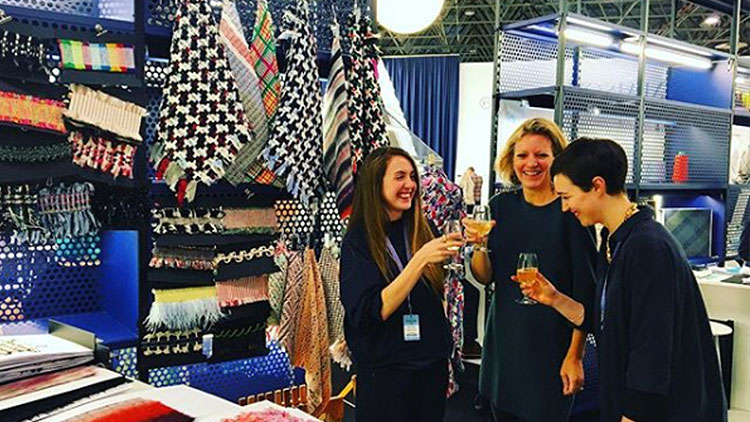
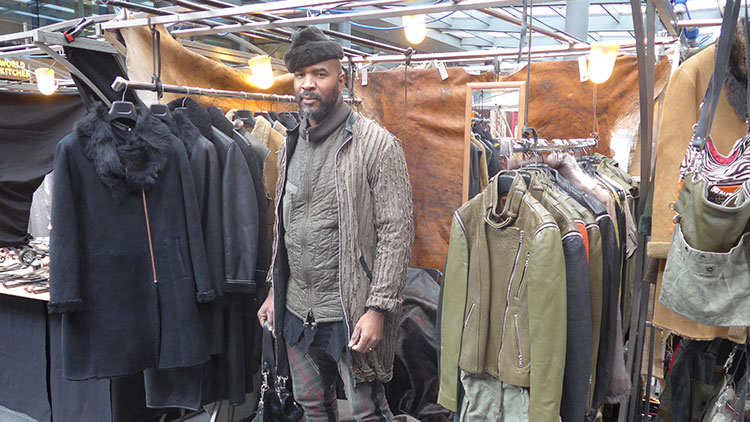

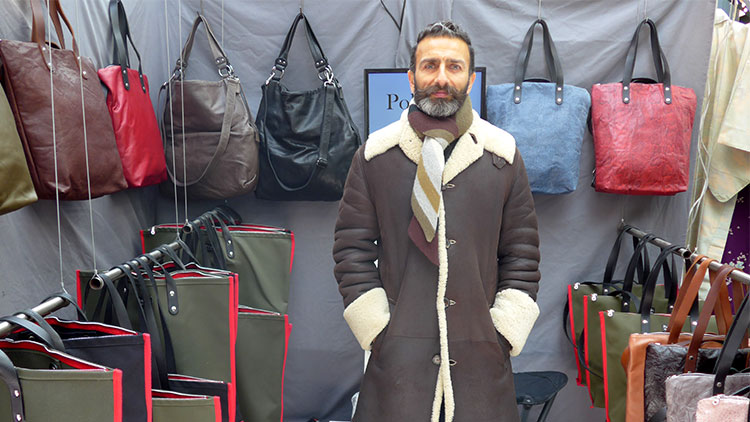
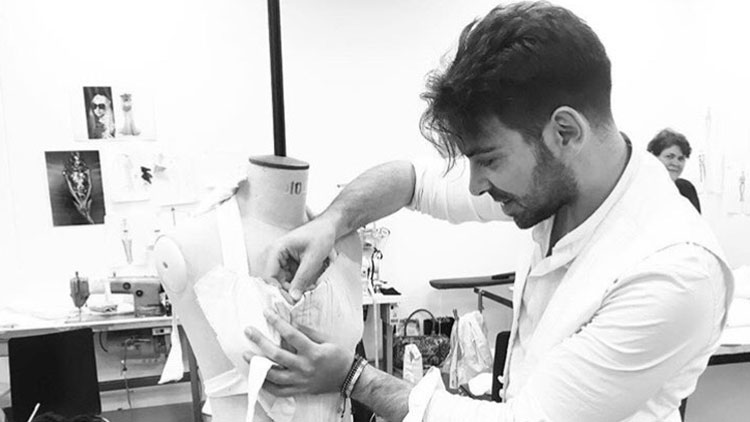
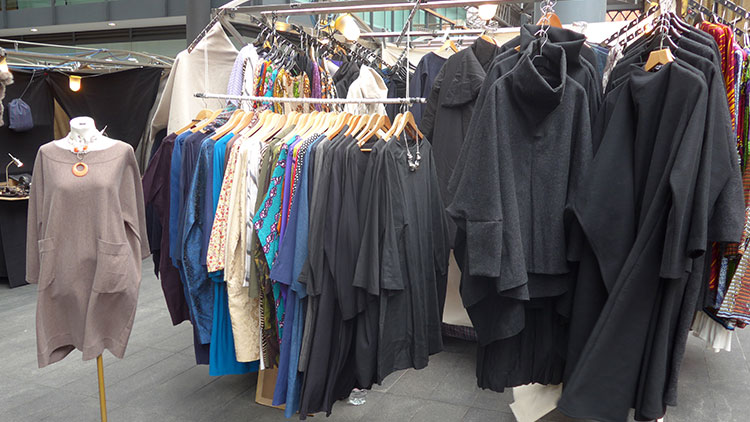
View our whole series, Behind the Seams, on the benefits of buying locally and the damaging impact of buying outsourced fashion.

